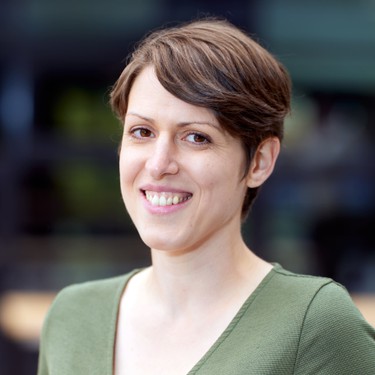Hawa Dawa Start-Up Interview — Real-Time, High Resolution Air Quality Data

How would you describe your business idea to a potential investor?
We measure and visualize air quality in an innovative way. We do this through the use of distributed network of connected, low cost air quality sensors as well as third party data, that enable us in creating citywide air quality heatmaps on a hyperlocal scale. Adding external data (e.g. wind direction) and a complex model of urban environment, we can generate a realistic and accurate picture.
The result is an easy-to-understand, hyperlocal map of various pollutants, updated in realtime. This map is our core product, which we sell directly via an API and use to give recommendations for city planning, traffic management and health risk groups as well.

What problem do you want to solve, what is your goal?
Air pollution is the biggest environmental health risk of our time. More than 90% of all cities with more than 100,000 inhabitants do not uphold WHO air quality guidelines, causing millions of premature deaths every year.
Furthermore, the list of diseases related to air pollution is very long: asthma, COPD, cardio vascular diseases, depression, obesity and even dementia have all been scientifically linked to this environmental problem. At-risk groups, such as children, pregnant women and the elderly, are especially vulnerable.
The first step in fixing this problem is to make air quality visible. This requires a vast amount of air quality data, which traditional solutions cannot yield.
We want to contribute to greener, more livable cities. By making the problem more measurable on the local level, we help to identify problem zones, raise awareness and provide a tool to tackle the problem in a smarter, more effective way.
How did you come up with your idea/concept?
The idea was born in the frame of the think.make.start hackathon. Originally, we planned to provide portable air quality monitors for risk groups, primarily asthmatics and COPD patients. However, two findings made us alter our approach:
1. A comprehensive market study showed that while risk groups are interested and willing to pay for hyperlocal air quality data, they do not necessarily see the added value of having another wearable.
2. Portable sensors post an immense challenge on data accuracy and validity.
To address these issues we adapted our strategy, where we deploy large scale stationary sensor networks and provide the data directly on smart-phones.
Our idea recently received the KARL-KOLLE Award for the best “technological idea”.

What is the background of your company name? What does it mean and why did you choose it?
“Hawa Dawa” is an international name, as air pollution poses a global problem. It means “air medicine” and/or “air purity” in Arabic, Suaheli, Hindi, Persian, Turkish, Urdu and Pashtu. We opted to choose a name understandable in many regions of this world.
For measuring the air pollution you will use your own instruments. What is their advantage against conventional detectors? And how do you produce them?
The key lies in our calibration methodology. It is state-of-the art and has been endorsed by top industry experts as being a trendsetting approach. For that to be implemented successfully, we needed a sensor node which met certain requirements in terms of sensor quality, price and connectivity. We did not find such a node in the market, so we created our own. The first batch was actually handcrafted at home by our team members. The current batch is made by a contractor. Recently our Lead Engineer has been named one of the Top 10 Innovators in Germany by the MIT TechReview for the quality of the work he delivered in the hardware.
Tell us a bit about your team. What makes it special?
Karim (CEO) and Yvonne, worked for several years for the United Nations Environment Programme (UNEP) as project managers in the fields of Climate Change mitigation and adaptation.
Matthew (Software Developer) researched at the TU Munich Chair for Traffic Engineering, studied at the University of York where he also conducted research at Eli Peli’s Lab at the Schepens Eye Research Institute, Boston (Harvard Medical School affiliate).
Birgit holds a PhD in Neuroscience from Boston University and accumulated plenty of experience in working on and interpreting large data sets.
Finally, Jannai has been named one of Germany’s Top 10 Innovators by the Technology Review Magazine for his work on the hardware side.
In general, the combination of team competencies and experience — in business, climate change policy, electronic, mechatronic, traffic engineering, data science and health care — makes the overall approach unique.

Why did you decide to work with XPRENEURS?
We heard about XPRENEURS through the second phase of Climate-KIC, which is also managed by UnternehmerTUM. Besides from all the goodies a startup in our stage needs, we applied mainly hoping that the first batch of a new and professional incubation program would carry a fresh drive in terms of support, input and network. We are extremely happy to be part of the XPRENEURS’ first cohort.
You can get more information about Hawa Dawa at https://www.hawadawa.com/ or check out their Facebook.
You want to become part of the XPRENEURS incubator program as well?
Get more information and apply at https://xpreneurs.io/.
